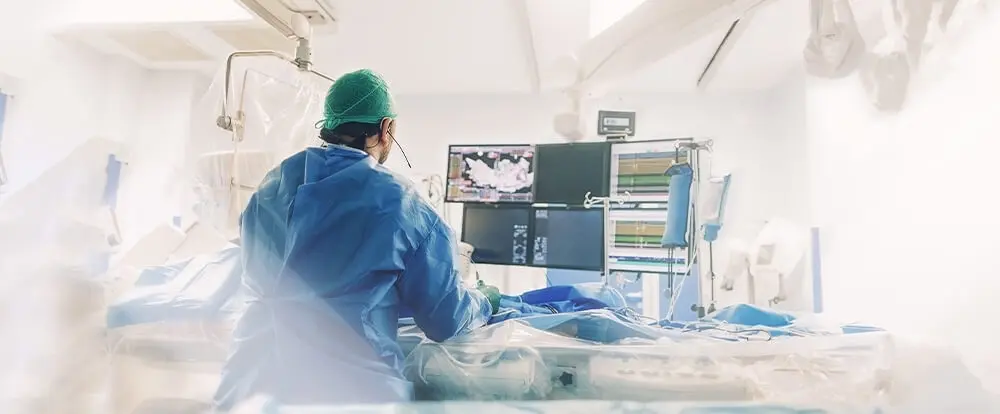In Medicana Hospitals, interventional radiology units are experts at using imaging guidance to carry out minimally invasive procedures to diagnose and treat various illnesses. These operations can frequently be completed without hospitalization and are typically less invasive than standard surgery. Some of the services provided by our interventional radiology units include the ones listed below:
- Angiography and Angioplasty:These treatments are used to identify and treat blood arteries that are restricted or blocked, including those in the heart, brain, or legs. Using X-rays or other imaging techniques, the blood arteries are visualized during an angiography by injecting a contrast dye. A tiny balloon catheter is used in angioplasty to expand constricted or blocked blood arteries, frequently with the aid of a stent to keep the blood vessel open.
- Biopsy: Interventional radiologists perform fine needle or core needle biopsies of suspected lumps or tumors under the direction of imaging techniques like X-ray, ultrasound, or MRI. It is possible to determine the type of tissue and whether it is malignant or benign using this minimally invasive approach.
- Embolization is a technique that stops or reduces blood flow to a specific region, such as a tumor or aneurysm. A catheter injects tiny particles or chemicals into the blood arteries, supplying the area to be treated. This can help lessen discomfort, stop bleeding, and decrease tumors.
- Thrombolysis:In this technique, blood clots in blood arteries are broken up using drugs that dissolve clots. Using a catheter, these drugs are administered directly to the clot, where they can aid in restoring blood flow and avert life-threatening complications like a stroke or heart attack.
- Kyphoplasty and vertebroplasty: These treatments for spinal fractures can improve mobility, reduce discomfort, and stop additional fractures. A cement-like substance is injected into the spine during vertebroplasty to stabilize and relieve pain. Similar procedures include kyphoplasty, which uses a balloon to make a gap inside the spine before injecting cement.
- Nephrostomy: Interventional radiologists can use this surgery to relieve urinary tract obstruction and create permanent or temporary access to the urinary tract for medicine delivery and drainage. A tiny tube is placed through the skin and into the kidney to allow urine to flow out and stop infection.
- Catheter Placement: Interventional radiologists can insert catheters for several purposes, including the delivery of chemotherapy, blood transfusion, and the removal of excess fluid. This treatment can be done as an outpatient with little discomfort and recovery time and is carried out under the supervision of imaging.
Because of the skilled and knowledgeable doctors at Medicana Hospitals who have the skills and experience to carry out these treatments with little discomfort or danger, international patients should pick Medicana Hospitals for interventional radiology. We also use the most recent imaging tools and technologies to guarantee precise diagnoses and effective treatment results.
Medicana Hospitals' thirty years of experience in the medical field, extensive hospital network, and international accreditations guarantee the quality of the service. Call us at +90 850 460 1010 or email medicanacc@medicana.com.tr to request more information or make an appointment.

 Let Us Call You
Let Us Call You





























